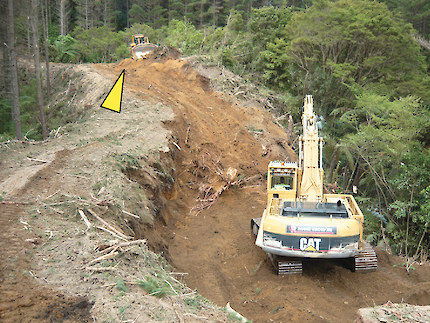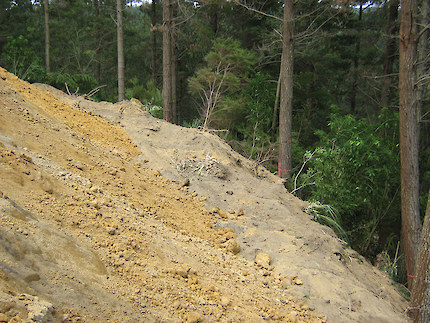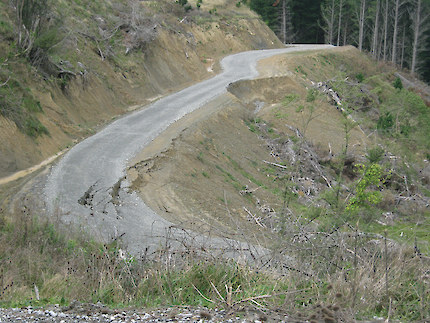Cut and bench fill construction is a standard method of constructing roads in moderate to steep hill country.
Diagram 2: Bench cut to contain downslope fill material

- A bench or benches can help stabilise the road or landing fill slopes because they provide a more stable base for fill
- Soil from the initial bench is side cast
- Locate the bench(es) so that the earthworks cut and fill volumes are balanced

- The bench is located near the toe of the fill for the section needing benching
- The bench is level
- The bench is wide enough for safe and efficient construction
- The dozer (arrow) is stumping

- The fill is contained on the bench
- Stumps are keyed into the slope at the toe of the bench
- Slash has been used to reduce erosion
When should cut and bench be used?
There is no rule as it depends on the site, however use benches on slopes:
- That are too steep for side cast construction
- That are between about 40 to 70% but less depending on soil type. The recommended fill slope for most soils is 65%
- Where there are known stability issues.

- A bench was built because the slope was too steep for side cast construction
- The fill was compacted in layers to increase fill strength
- The bench contains all the earthwork fill
- The edge of the bench is visible, which shows it was not over filled

- A lack of benching and poor fill compaction led to these significant failures